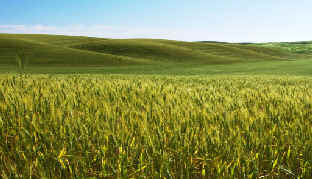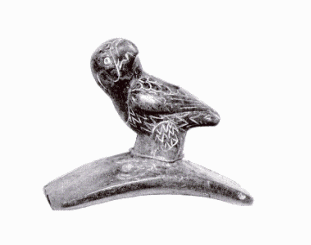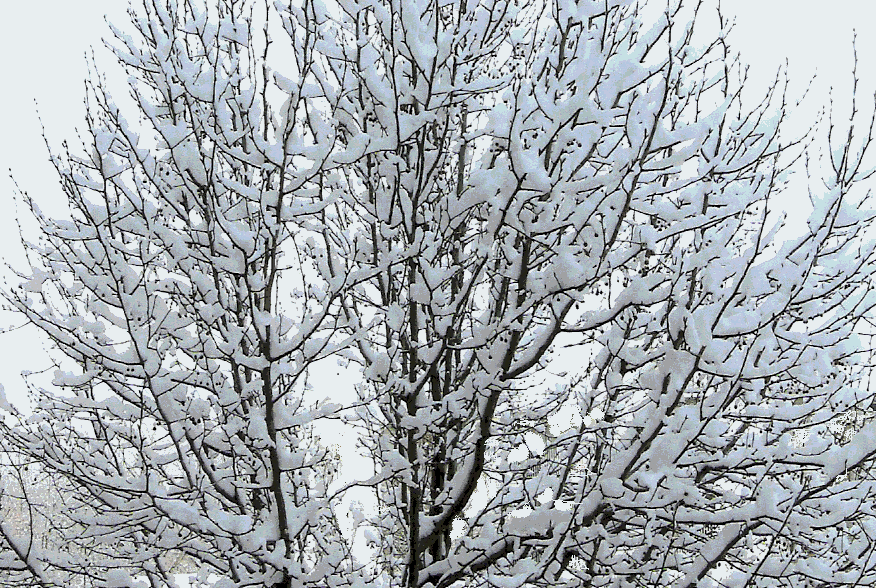CHOICE ABOVE ALL OTHER
LANDS
Book of Mormon Covenant Lands
According to the Best Sources
|
Seasons in the Promised Land |
|
Scattered Israel
has settled in numerous lands with climates very different from the
land of Canaan.
The ideal Promised Land, some might say, should be a veritable paradise year
round. There are certainly places in Mexico and Central America
that meet this expectation. But just because the covenant people might come to
settle in a place, does not make that place a Promised Land - even if that place is a "paradise".
Tropical lands like southern Mexico and Guatemala experience two seasons year round - a wet and a dry
season.; The covenant lands of the Book of Mormon, including the land
of Israel, have more than two seasons per year. It is clear that
when the Book of Mormon mentions "seasons" only part of the year is meant,
and that the word "seasons" refers to "seasons of the year" naturally
distinguished by meteorological conditions or "climate".
(Mosiah 18:4
, Alma 46:40 The Prophet Joseph Smith stated that Book of Mormon peoples arrived in "the lake country of America... choice above all... the earth" (region of Lake Ontario). He apparently believed that Book of Mormon peoples, or their descendents eventually migrated to other places such as Mexico and Central America. (Joseph Smith, editor, "Traits of the Mosaic History, Found Among the Azteca Nations", Times and Seasons, Vol. 3, No 16, June 15, 1842, pg. 818) According to the Book of Mormon, descendents of Book of Mormon peoples, who keep the commandments of the LORD, are entitled to inherit the covenant lands of their ancestors and to prosper there. (2 Nephi 1:5-7) The lands of the Book of Mormon are in a land choice above all other lands, a land of liberty, a land whereon scripture says the LORD would raise up a mighty nation above all other nations, a land upon which no kings would raise up to the Gentiles (1 Nephi 13:30, 2 Nephi 10:10-14, 19, Doctrine and Covenants 10:49-51). The lands of the Book of Mormon are therefore unlike Mexico and Central American which in modern times have had numerous emperors, dictators and potentates "upon the land": Emperor Iturbide (1783-1824), Dictator Santa Anna (1794-1876), Emperor Maximilian (1832-1867), progressive minded tyrant Francisco Morazan (1799-1842) to name only a few. Santa Anna in particular, ruled as "perpetual dictator" of Mexico and did not perish as a consequence of his ambition. The LORD said to Moses: "Speak unto the children of Israel, and say unto them, When ye be come into the land which I give unto you, and shall reap the harvest thereof, then ye shall bring a sheaf of the firstfruits of your harvest unto the priest. (Leviticus 23:10, KJV)" This verse refers to the spring harvested barley, that Israel was commanded to bring to the priest for a wave offering during the Feast of Unleavened Bread - which feast involved the Passover (the Paschal Lamb). The Book of Mormon symbolically relates the "first-fruits" of grain to resurrection. 2 Nephi 2:8-9, Jacob 4:11)The LORD also commanded: "...thou shalt sacrifice the passover at even, at the going down of the sun, at the season that thou camest forth out of Egypt." (Deuteronomy 16:6, KJV) "Thou shalt therefore keep this ordinance in his season from year to year." (Exodus 13:10) The LORD therefore chose for Lehi and his families, a land subject to more than two seasons in step with the seasons of the land of Israel. In this chosen land it would be possible to keep the seasonal ordinances "in all things, according to the law of Moses". (2 Nephi 5:10) Recognizing the importance of abiding by the LORD's Torah (the Law), with all its duties and celebrations, Nephi son of Lehi wrote: "... I remembered the words of the Lord which he spake unto me in the wilderness, saying that: Inasmuch as thy seed shall keep my commandments, they shall prosper in the land of promise. " "Yea, and I also thought that they could not keep the commandments of the Lord according to the law of Moses, save they should have the law." (1 Nephi 4:14-15) Nephi then endured an extreme trial, executing the will of God, so that his people might have "the record of the Jews". Thereafter, Nephi trusted fully that the LORD would point the way to a land where they could keep all the commandments and ordinances of Israel - not just any coast of the Americas, but a land of springtime and autumn, of winter and summer, a land where they could grow barley and grapes, a land supplied with goats and other recognizable animals and all that the Torah required. (1 Nephi 18:25, Mosiah 9:9; 11:15, Leviticus 23:10-14) Showing that the LORD in fact lead them to such a land, Nephi later recorded: "And we did observe to keep the judgments, and the statutes, and the commandments of the Lord in all things, according to the law of Moses." (2 Nephi 5:10) The land of Israel resides in the Mediterranean temperate zone. Occasionally the words, "winter" and "summer" appear in English translations of Hebrew scripture. The word translated "winter" in the Hebrew Bible is "horef" (חֹרֶף). This word can also mean harvest-time, autumn, or beginning of winter. Winters in the land of Israel are typically cool and rainy, whereas summers tend to be hot and dry. Comparing the temperate land of Israel with tropical Central America; it is important to realize that when Israel sees winter and spring, Central America experiences a dry season. When Israel experiences summer and autumn, Mesoamerica sees lots of rain. The Hebrew word translated "summer" is "qayitz" (קַיִץ). The Hebrew word "aviv" (אָבִיב) is typically translated "spring" but its original meaning relates to a stage of barley development. Israel's festivals are closely connected to seasonal harvests. These harvests (barley, wheat, autumn ingathering) are subject to the climate of a temperate zone, not the sweltering tropics. If you follow the latitude of Jerusalem to the Western Hemisphere, you find yourself in the United States of America. Why is the mention of "barley" in the Book of Mormon so important? Committed to the Law of Moses, the Nephite year started in the spring, following a critical stage of barley maturation in the fields, called "the aviv". The first month is therefore called "the month of the aviv" in Hebrew scripture, or simply "the first month". (Shemot (Exodus) 12:1-2; 13:4, LDS CD-ROM Resource Edition) The King James Bible seems to suggest that the first month was named "Abib", but Hebrew scripture actually describes the first month as, "hodesh ha'aviv" (חֹדֶשׁ הָאָבִיב), which means "month of the aviv", meaning "month when the barley has matured to the state called "aviv" (אָבִיב). Fall planted barley may remain dormant during cold winter months (dormancy was understood by the Nephites; see Alma 32:34), but barley that survives the winter in the U.S. will come up in the spring. Evidence of ancient barley cultivation has been found in the United States. It is likely that the Nephites also planted a variety of barley in the spring to be harvested in late summer or autumn. In Akkadian (an ancient Assyrian / Babylonian language) "sheum" was a word used at various times to refer to barley, grains generally, and even pine nuts. In Mosiah 9:9 "sheum" is listed with Nephite "seeds" of "wheat, and of barley"... (Barley and Wheat in the Book of Mormon, Robert R. Bennett, an article published by The Neal A. Maxwell Institute for Religious Scholarship, last updated August 2000)
Bennett
summarizes a 1983 article in Science on the discovery of barley
cultivated in ancient northern "Barley samples dated to the Middle Woodland (early centuries A.D.) and late Woodland (A.D. 600-1050) cultural periods indicate that pre-Columbian barley was both known and cultivated over an extended period in the New World. "It is reasonable to conclude," states archaeologist Vorsila L. Bohrer, who directed the work associated with these discoveries, "that we are looking at a North American domesticated grain crop whose existence has not [previously] been suspected." "Archaeology and the Book of Mormon
- Wikipedia" admits that "No evidence of pre-Columbian barley has
been discovered in Scripture informs us that Jesus was crucified and
resurrected in the Passover season (in the spring, the month of the aviv,
the first of the Israelite year). As to the
exact day when Jesus was crucified, the
Gospel according to John disagrees with the Synoptic Gospels (Matthew, Mark
and Luke), and the Book of Mormon admits the possibility of a
"mistake" in the recorded date of events near this time.
(Mark 14:12, All
Israel
was commanded to commemorate their deliverance in the season that their
ancestors came out of Egyptian bondage.
The ancient peoples of Central and South America are predominantly of Asiatic descent. Native Americans of the Great Lakes region have been found to carry a genetic marker that links them to Europeans and possibly peoples of the Middle East. (Rod Meldrum, DNA Evidence and the Book of Mormon, 2008)
For more information on the meaning of "Abib",
Copyright © 2008 by W. Vincent Coon |



